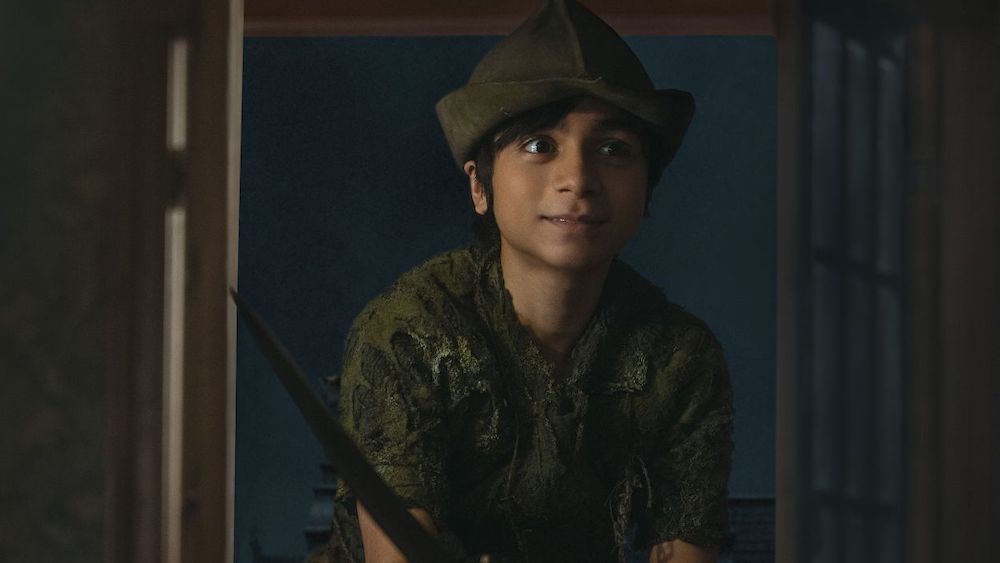
Bojan Bazelli’s credits as a Cinematographer date back 36 years and include such memorable films as China Girl (his debut and the first of three collaborations with Director Abel Ferrara), Pumpkinhead, King of New York, Boxing Helena, The Ring, Hairspray, Pete’s Dragon, Underwater, and the new Disney+ movie, Peter Pan & Wendy. The veteran DP, who hails from Montenegro, actually skipped the usually requisite Hollywood ladder climbing. He graduated from film school in Prague, arrived in America, and went right to work on China Girl. And he never looked back.
Well, that’s not quite true. During a recent conversation with Below the Line, Bazelli recounted his earliest fascination with movie imagery, revealed that he very nearly made a fourth film with Ferrara, and took us on a deep dive into his innovative work on Peter Pan & Wendy. The film puts the focus on Wendy Darling (Ever Carradine) as she encounters Peter Pan (Alexander Moloney), Captain Hook (Jude Law), the Lost Boys, and Tinkerbell (Yara Shahidi) during her adventures in Neverland. Here’s what Bazelli had to say…
[Note: This interview has been edited for clarity and length]
Below the Line: When and how did you start to take notice of images in movies and on TV?
Bojan Bazelli: I started early in my teenage days, virtually earlier than that. It was this fascination with the image that is created by this tool — by the camera — that started this. “Oh, how is that even possible?” I was naively thinking of how the image gets on that thing, as a kid wondering. Obviously, it was provoked by images I’d seen. We didn’t have TVs. We didn’t have many things in my early days. There was nothing much to look at.
There was one movie theater in my coastal, sleepy town of Montenegro, down by the Adriatic Sea. One movie theater for the entire region. You’d see some movies there, but that was pretty much all the fun you had. It was cafes and movies. My dad was a medical doctor. He also loved film, films, and photography. He had a still camera and he would take some pictures. I started with seeing these pictures in film and little by little my fascination with moving images started.
My dad would get a projector and would get Super 8 copies of Stan Laurel, Oliver Hardy, and Charlie Chaplin films. The images of this thing — the moving, the light, and the projection… Then we got a Super 8 camera. He was photographing some interesting things. He would go on location for patients because it was a small town; one doctor covered the whole thing. It was everything. He had an idea, “Okay, I’ll film something when I see something interesting, going to these villages.”
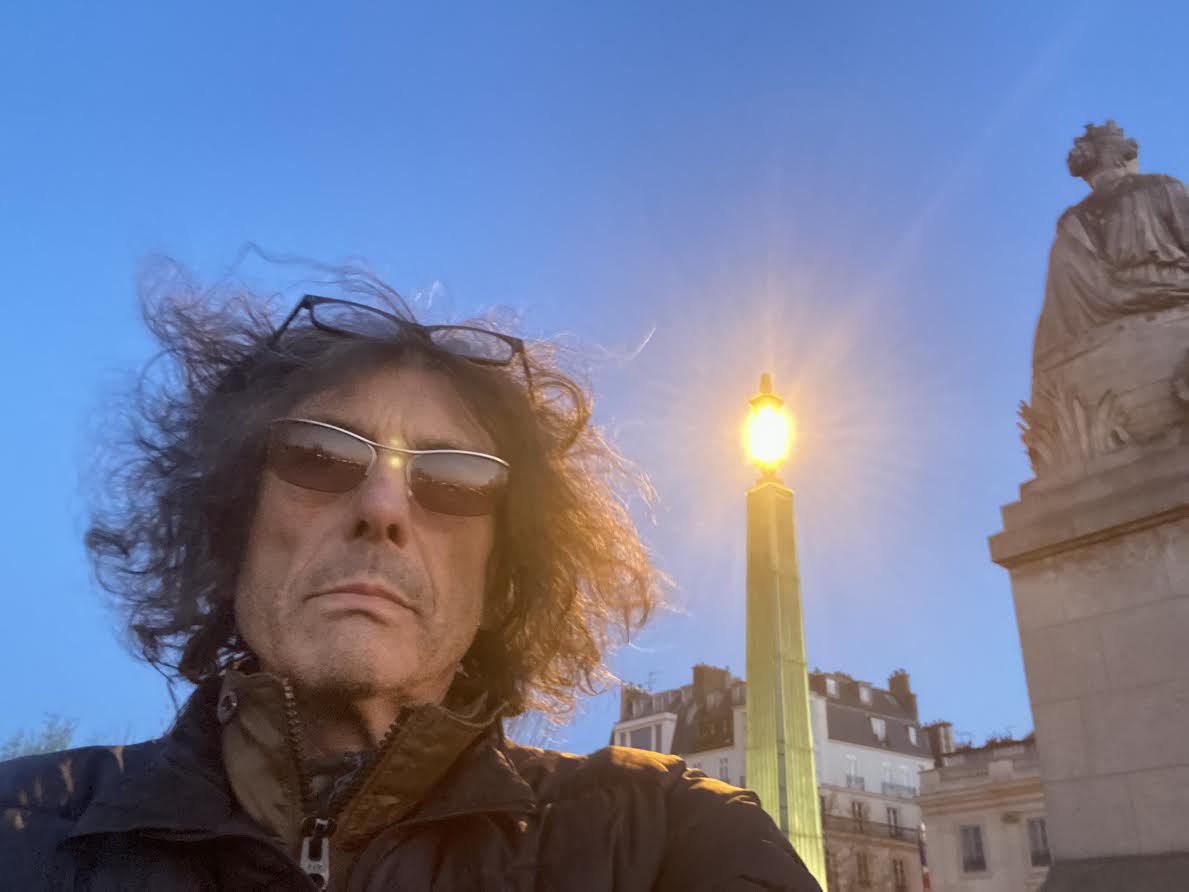
BTL: And you clearly paid attention…
Bazelli: He would show these pictures and, little by little, he started me on it. I wanted to see how the image is formed. I wanted to develop the film, because I learned that it is actually a photochemical process when it happens. A local photographer explained a few things and that basically developed into, “I want to do it.” I started collecting knowledge and reading books. That expanded into this fascination with it — and love. I myself started taking pictures. The next thing you know, high school is over and you’re going, “What do I want to do?” There was nothing else I wanted to do but go study film.
BTL: Abel Ferrara gave you your big professional break. How did you, a kid at film school in Prague, connect with him, an indie filmmaker based in New York City?
Bazelli: The story is very out of the script. Everyone would say it’s unreal. I had just graduated from film school in Prague, and we had met at a film festival. Some nice people and cool students from UCLA came to present their work at a school film festival. The person who actually encouraged me with my work, because my film had good success, said, “You should definitely come to the United States.” Coming from a different country — and a communist country — then going to the United States, it’s not like you just pick up your flight ticket and you go. Visas were not given to young boys coming from Eastern countries.
For me, I took that as a serious offer, but it took a while to organize how to get to the United States. One of the easiest ways was actually applying to another film school. If you get accepted, you get a student visa. I was accepted with my work at the American Film Institute. They sponsored the visa and I was able to go. I came to the United States, to Los Angeles. I built my reel from my school days and sent it out to various people and agencies. Abel Ferrara saw the reel and loved it. He wanted to talk. I said, “He’s in New York. I don’t have the money to fly to New York from L.A.” Anyway, I met Abel in New York for the interview and it was love at first sight. Two weeks later, I was on Mulberry Street shooting a San Gennaro Festival scene for China Girl, which was in ’87. I was a young kid, just graduated from school.
Abel is having a retrospective of his work in L.A., and I was invited to do a Q&A on one of his movies. We did three movies together: King of New York, China Girl, and the Body Snatchers remake. I was actually going to do Bad Lieutenant with him, but they changed the dates and I was on something else. It was supposed to be later in the schedule when I was done with it, but because of Harvey Keitel’s availability they shifted everything.
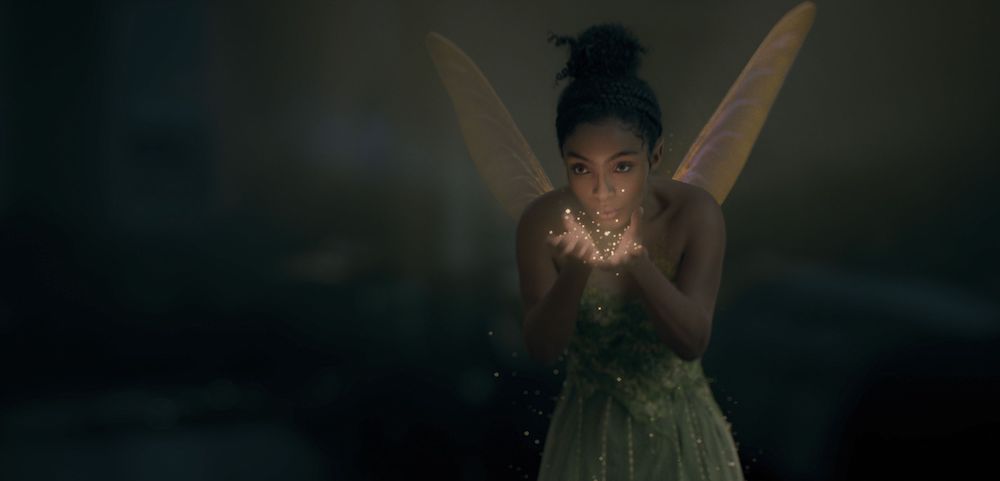
BTL: Let’s switch to Peter Pan & Wendy. We’ve seen live-action Peter Pan movies, including Hook, Pan, and Wendy. What kinds of discussions did you and David Lowery have about making this stand apart from its predecessors?
Bazelli: Dramaturgically speaking, it’s his point of view, his take on the girl coming of age into this scenario where the Peter Pan seen in the movie is a backdrop. His script, when we read it for the first time or second time, it was so much more about the darker side of Peter Pan. Not Peter Pan as a character, but generally, “How is the relationship between Peter and Captain Hook perceived? How does she fall into it? Where’s Tinker Bell? What’s her role?” Basically, he broke it into pieces, the whole movie, and assembled it in a different way, in a sense. He talked to me about how to make the movie — in a Disney world — the darkest, grittiest, most real, and organic film that doesn’t want to resemble the old movie or the old remake. He wanted it to be just a title, and just a name.
We were going back and forth with many ideas. Some of these ideas were so bold and so strong. When it’s only the director and yourself, you can talk about it and have great ideas, but then obviously we got pushback from Disney. One of the ideas was shooting the London sequence all on 16-millimeter film. We were doing it industrial-age, gritty, dark, dirty, not happy, and then there was a family in the midst of it, the scene at the beginning of the movie where she is packing and not ready to go boarding school. It feels like a real movie, and then the transition to Neverland would be something else. Those were the ideas.
The relationship in Neverland, the Peter Pan layer in that, is also about how dark that is, how moody, how scary it is when Captain Hook comes in and kills him. That’s the darkest part of the whole movie. Maybe the idea of all of that sort of lingering on the horror side a little bit. We presented that to Disney and they loved the idea, but they were still not accepting the full spectrum of that. They were saying, “Maybe it’s too much.” We took this film to — hopefully — a higher, more interesting level than it would’ve been if it’s just respectful of the old one. I don’t think we succeeded fully to win the game because, obviously, it’s the system. The system doesn’t let you do much.
When Captain Hook kills Peter Pan, he comes out after Peter Pan falls; I don’t know how many people noticed that. When he comes in, has a fight with Peter, and he kills him, and he has a blue captain’s captain suit. He comes out of that room, virtually a matter of seconds later. He is looking down and you realize, maybe subconsciously, he’s in a brand-new red coat that is the opposite spectrum of color — from blue to red. We wanted to make that symbolic with those little details.
When David lets himself be in this sort of indie world and brings that vibe, anything is possible. To get a protagonist to change the color of his suit in the same scene — one cut to the next — those things are golden moments, when you love talking about the old ideas. David, he’s not a technical guy and neither am I. I’m more like, “Let’s see how it feels” more than “How is it going to be done?” I didn’t come to this realization until later, but as long as the process of understanding happens. We love the process of breaking it down. We had plenty of time with the pandemic in-between, so the movie was put on ice. We had an abundance of time. We had plenty of time to think. We were not pushed by any time clock.
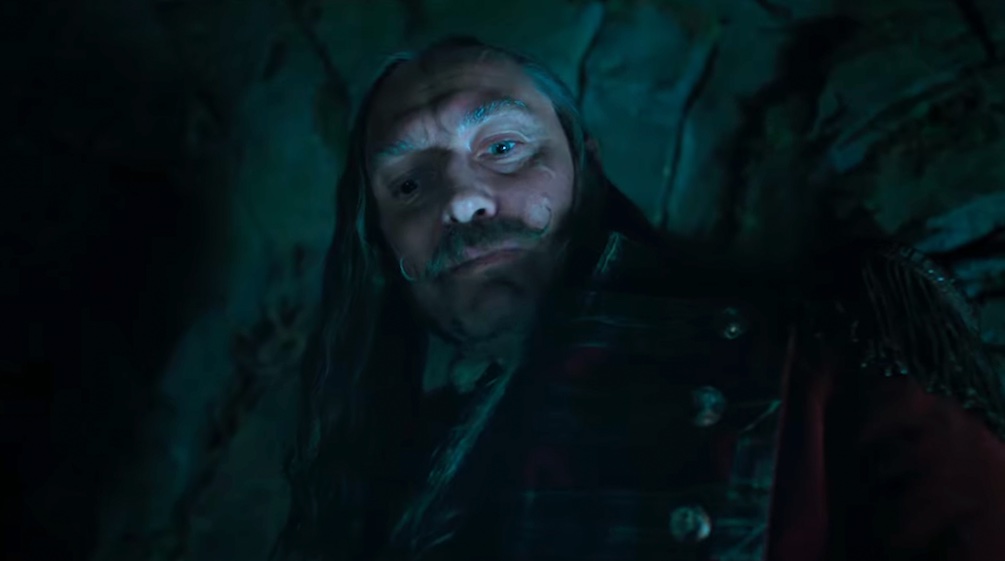
BTL: The opening sequence starts with an old-school iris, and veers into long, sustained shot that follows Wendy (Ever Carradine) through the Darling house, up the stairs, and into the kids’ room, where they engage in a play sword fight until Peter glides into the scene. So, that’s a mix of multi-level sets, kids, dogs, visual effects, and more. What went into crafting that three-and-a-half-minute take?
Bazelli: It does go from the ground level in the house to a spiral staircase, all the way up into her room because it was conceived as a one-shot – and it still is a one-shot. Unfortunately, because of the complicated three-story house, we could not build a three-story house on a stage. The floor where she enters her room, it’s a separate entity and it’s not in the same house. It’s on the same stage, but it’s not. There is a morph in that moment when she enters the doorway upstairs, which makes it more challenging altogether as a process because it’s not shot at the same time. The first part, which is almost three quarters of the shot, was shot in one shot. That was challenging enough.
The most challenging part was to basically rise up with the spiral staircase. As you’re rising up, you have to follow her around because she’s going around the stairs, which immediately was a red flag for many people, “How do we go up and how do we pair with her, because that’s totally against the physics and mechanics?” All the people who put things together, they’re great. They have great brains. We started bringing all the ideas, “Okay, what about this? What if we build the set another story higher and we put a crane?” Many things came and went that didn’t or couldn’t work.
What made that shot possible are two elements that were made together. The one thing that was so important was the Steadicam tool. It is not a typical Steadicam. It’s called the Steadicam Trinity system, which is a Steadicam base idea that has an operating head. The tilt and the pan, it’s not mechanics. It’s not the physics of an operator moving himself, it’s the camera itself on the Steadicam rig. It would be so much easier if we didn’t have to start on the pictures. We start on pictures with dolly and then we hand off to Steadicam. Then it’s clumsy and impossible to follow children, and go up. We basically said, “We need to have a Steadicam.”
The tool that the wonderful Camera Operator Dean Heseldan actually ended up buying — that was still brand new two, almost three years ago now — was some novelty. It was used accidentally in 1917, and it was new for Steadicam operators. Not many people had even practiced with it, and so forth. Anyway, that tool was used and I’ll get to how it was connected to the other tool. The other machinery that this genius technician built is the elevator with a circular platform that goes up on a vertical rod. It goes up full speed, but that’s only one part.
The other part, that whole machine rotates as well. It’s going up and rotates. The rotation of that machine is controlled by the operator so he can follow the actress because she’s going full speed. She’s moving fast, she’s going up upstairs, and she doesn’t want to slow down, so we have to catch up. If we are going too fast, we are not keeping her frame. If we are going too slow, she’s below the frame. If she’s turning, he needs to turn with her at the same time, so it’s lots of cues and adjustments. The other Steadicam Operator is controlling the wheels on a Steadicam, so he can tilt. He only controls the tilt, because that’s the important part. The rotation is controlled by the machine and the platform.
Once that was invented in one way and put together, an idea was conceived. Then it was like, “That sounds like we don’t have to cut the shot.” Originally, we were thinking of maybe doing three cuts in a whole shot — three morphs — but it would totally disregard the action. The children needed to be in full swing and we couldn’t continue the action right away. Only one morph was made when we come up fully from the ground level to the second story. This is probably something 25 feet, if not 30, in height. When they enter the room, we morph that. That was the easy part in one way.
BTL: And then?
Bazelli: Now, we had to morph into the new shot that had to perfectly match the speed of the camera and speed of the move, continuing now through the door. That part where the children enter in front of the lens, if the camera goes into the front — into the doorway — that had to be repeated one more time. As anything is in this film business and scheduling, that’s where the schedule sometimes is a month later. The first shot was done on our last day of pre-production, on a Friday. It took us a day. They could not afford to waste a day of shooting on one shot or half a shot. We scheduled that for the last day of pre-production.
We shot for the whole day, 10- 15 takes. We got that, and then we came back a month later to do a continuation of that shot. It was amazing how it all happened. It was challenging to the point of the mechanics, physics, geometry of the angle, in a shot all working against each other. Whatever worked for one part didn’t work for the other part. Eventually, with a bit of luck and ideas, it came along.
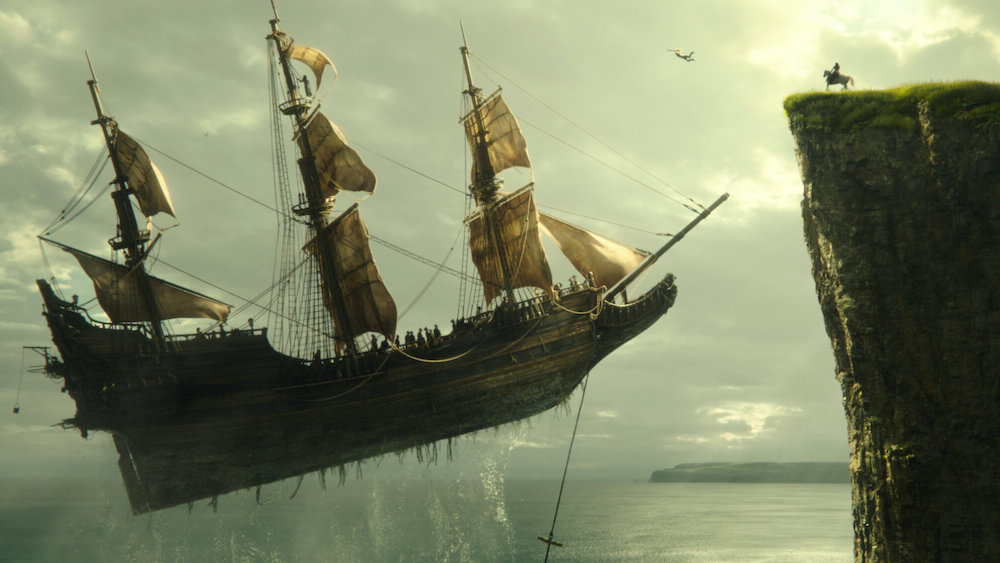
BTL: Captain Hook’s ship, on the other hand, was built so that you could get cameras and lights set up, right?
Bazelli: The ship was full-size. Seven-eighths of the size was built on the outside stage because you obviously didn’t want it to be inside. I hate natural light to be by the lights on the stage. Disney wanted it to be inside because of the weather, so they could control everything and the schedule. We said, “No, we’ve got to be outside.” They built us a beautiful ship with full detail and carved-out wooden elements. We shot for seven weeks on the ship. The goal was — because we had children — we could not wait for the sun, we could only choose what part of the day we could shoot. We could not say, “Okay, now it’s raining. We can’t shoot for two, three, or four hours.” With the Grips, we built an amount of controlling elements above the mast. The sails were occasionally visible, so they were not really featured. Instead of sails, they built flags, moving like big gobos, big sails, everything we wanted basically to control, either the sun or when it’s raining. When it’s raining, it’s sunny. When it’s supposed to be sunny, it’s raining.
We added a little thing that in Neverland, it doesn’t really matter where the sun is — it’s always in a shot. Anytime you see the sun in a shot, in a scene, it’s not the sun. It’s not the sun because the sun is so high up in the air that it is not possible to make it so low in the frame. I had two years — by now — using what’s called a Desisti light, which is a round, huge LED light. It has 600 LEDs in it and it’s six or seven feet in diameter. It’s called Aurea, which in Italian means golden. We always put it in a shot and we said, “This is the sun.” The distance to the camera was mimicked, so it looks realistic.
Very little work in post-production was replaced or added with the sun rays, sunbeams, and stills of the sun. Sometimes you don’t even see it. Sometimes it’s not even visible, the light and the flares. That was another stylistic choice, between David and I, to put a sun in the frame every time. The sun in Neverland is everywhere. It’s behind Jude Law. It’s behind Peter Pan. There’s no logic to, “How is the sun now here and there?” The nuances that nobody notices, we like to put it in there.
BTL: You’ve noted that this was a collaborative effort. Who could you not have done your job without?
Bazelli: This is my second movie with the same crew in Vancouver; a wonderful group of people I love. The way we photographed this movie — in terms of camera movement — was all done on a crane. It was done on a 50-foot techno crane. That is a machine that is so complex and large to create those micro-moves and fine-tune details in the movement. It’s just incredible artistry of the Dolly Grip, Ryan Monro, and the crane is operated with three people in a synchronized manner: the crane arm, the push, the extension of the arm, and the movement. Two or three people — and obviously a Camera Operator — but together they have to synchronize themselves with the notion that the actor has to be feeling safe. On the ship, for example, the crane base is 35 feet away from the actor. He’s coming to the camera and the camera is going to meet him. He’s shooting all wide-angle lenses, so when you stop to (get a) close-up, you are about 18 inches away from the camera. It’s this close from the camera and he’s moving from a distance of 40 or 50 feet. Precision, plus artistry. So, I would say my Dolly Grip in the sense that this is a combination of him and the Camera Operator.
Another, obviously, is the Key Grip, Finn King. And the gentleman who created this world of technical stuff, Dave McIntosh. We created some crazy moves in a cave when Jude is running from both of the alligators. We are basically on a monorail. We built a huge circle to follow the set with a monorail. A camera was hung on it, and it was controlled by remote so he could run as fast as an actor wants to run on terrain. He created that. He built that spiral movement up the stairs and created all the perfectly controlled flags and gobos on the ship from a button. Eventually it was all built in; he had a system underneath the ship. We said, “Well, okay, just make it a little longer.” We’d press the button and things would move 150 feet up. When you see the ship, when they see Peter Pan for the first time and he’s descending down the rope, that’s how tall the ship was. There are no effects there. He’s not on a sail because that’s dangerous, but he’s on the crane — or the crane is holding his rope other than a sail. The height of the mast is the real height.
BTL: What’s next? Did you complete anything after this and before the strike began?
Bazelli: Finished, no. I’ve done a few things. I started with Gore Verbinski. We started an animated movie and spent six months on it, but it got canceled. It was called What A Funk, a wonderful animated film. It was unfortunate that Netflix decided it was too much money. A few projects that didn’t happen, and one I didn’t get. So, I don’t know yet what’s next.
Peter Pan & Wendy is streaming now on Disney+.





